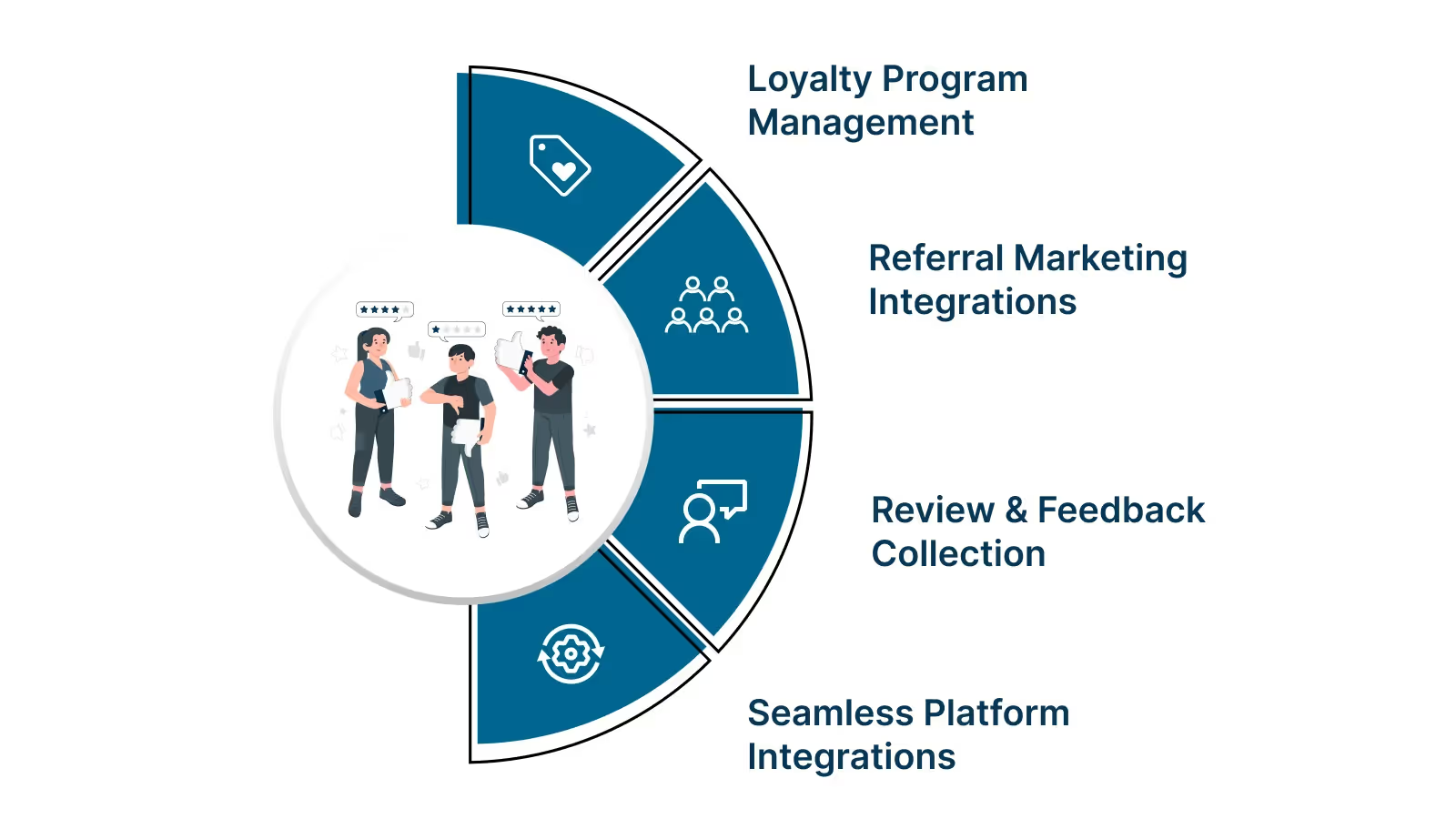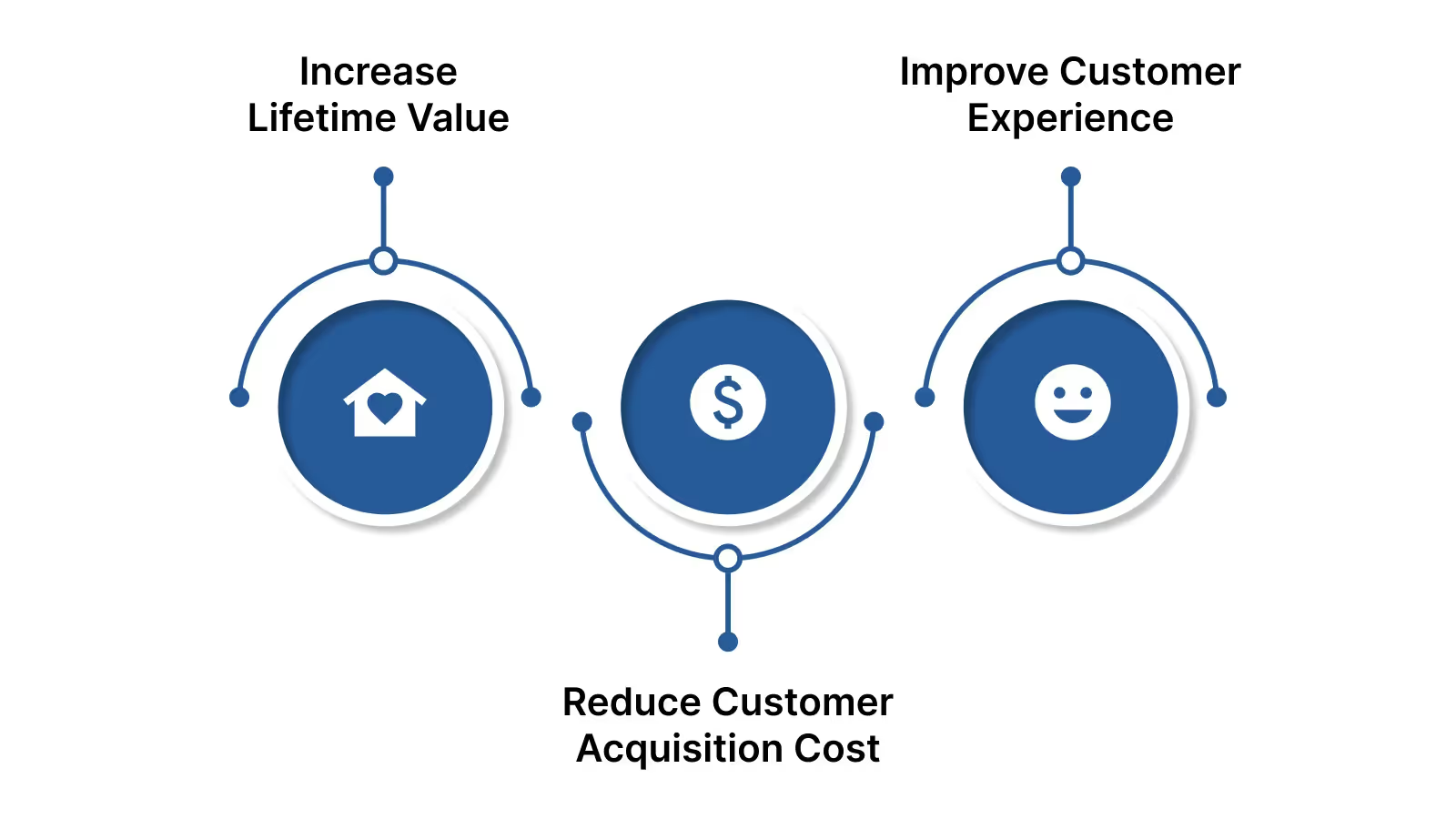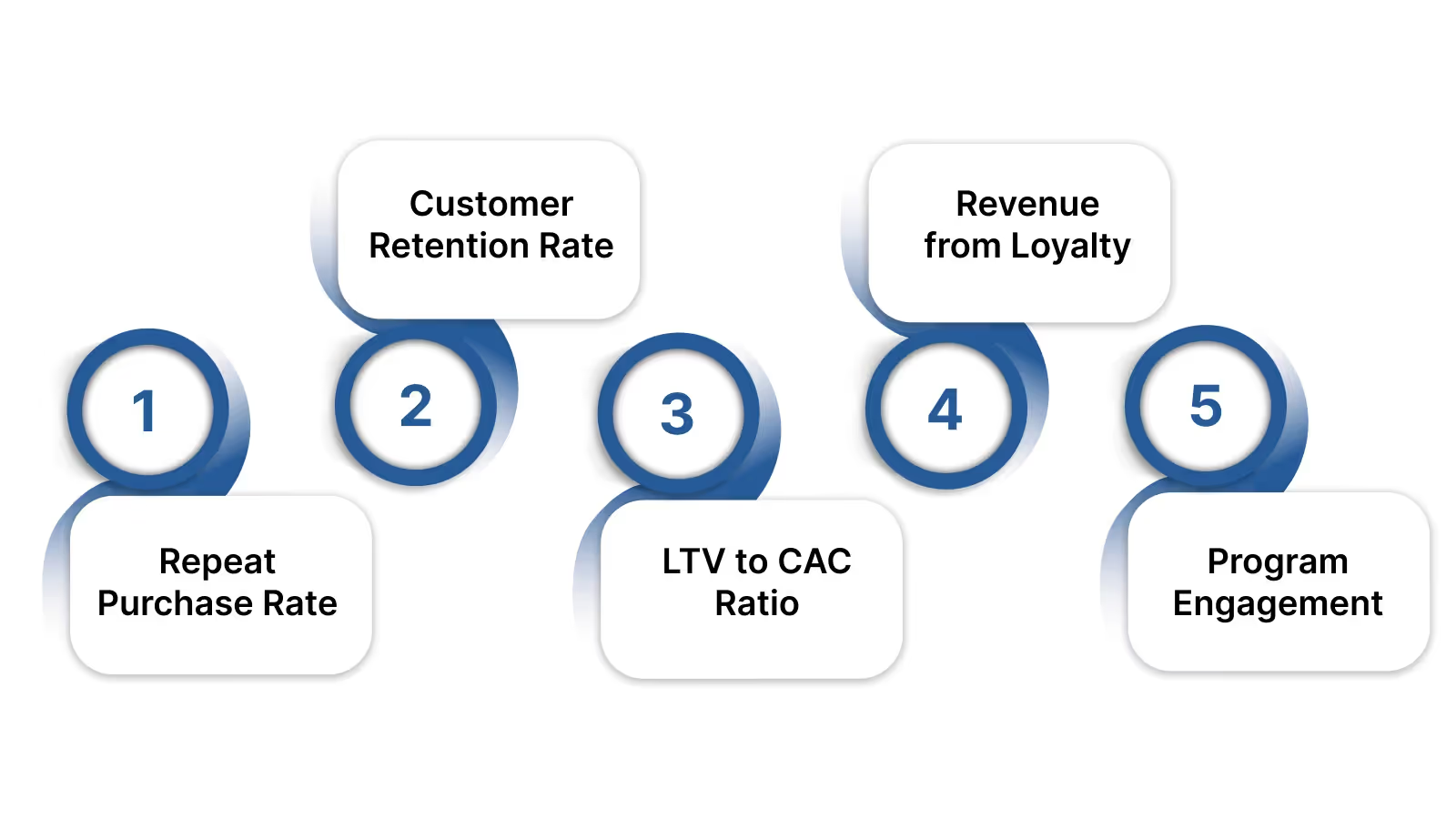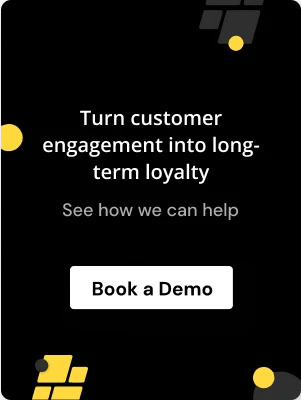.avif)
.avif)
Retention is the silent engine powering sustainable growth for direct-to-consumer (D2C) brands on Shopify and WooCommerce. But for most eCommerce marketers and founders, it’s still treated as an afterthought, something to “fix later” with an email campaign or a limited-time offer. In reality, every time a first-time buyer doesn’t return, your customer acquisition cost (CAC) goes up and your customer lifetime value (LTV) potential shrinks. As per Forbes, businesses have a 60 to 70% chance of selling to an existing customer, while the probability of selling to a new prospect is only 5% to 20%.
In a market where performance marketing costs keep climbing, smart D2C operators are shifting focus from acquisition to retention, and that’s where a customer retention platform becomes essential.
In this blog, we’ll break down what a customer retention platform actually does and why it has become increasingly critical for brands operating on Shopify or WooCommerce. We’ll explore how it fits into the broader customer journey, highlight key retention metrics worth tracking, and flag common mistakes that limit its effectiveness.
Key Takeaways
- A customer retention platform helps Shopify and WooCommerce brands drive repeat purchases, referrals, and long-term loyalty.
- It combines loyalty programs, referrals, reviews, and engagement flows into a single, easy-to-manage system.
- It uses first-party data (like purchase history and browsing behavior) to personalize every customer touchpoint.
- It goes beyond email and CRM tools by automating retention journeys across the entire customer lifecycle.
- Acquiring a new customer can cost 5–7x more than retaining an existing one, making retention a more cost-effective growth lever.
- With ad costs soaring and cookie-based tracking fading, investing in retention is more important than ever.
- Brands using retention platforms grow more sustainably by increasing LTV and reducing CAC.
What Is a Customer Retention Platform?
A customer retention platform is a tool designed to help eCommerce brands improve loyalty, increase repeat purchases, and grow lifetime value. It focuses on the post-purchase journey, making sure your customers stay engaged long after their first order.
Unlike generic CRMs or marketing automation tools, a retention platform brings together everything that drives loyalty in one place: rewards, referrals, reviews, personalized offers, and more. It helps you identify high-value customers, re-engage those at risk of churning, and create experiences that make shoppers want to come back.
For Shopify and WooCommerce brands, the right retention platform can reduce customer acquisition costs by turning existing buyers into brand advocates, without overwhelming your team or complicating your operations.
Key Features to Look for in a Retention Platform

Choosing a retention platform isn’t about stacking features; it’s about selecting tools that align with how your brand grows. For D2C teams, the right solution should streamline retention efforts, build lasting loyalty, and unlock more value from the customers you've already worked hard to acquire. Here are four must-have capabilities that set strong platforms apart.
Loyalty Program Management
A great loyalty program should feel like part of your brand story, not just a discount engine. Look for platforms that support tiered rewards, flexible point-based systems, and referral incentives that go beyond the basics.
When customers clearly see the value of coming back and are rewarded meaningfully for it, you create engagement that compounds over time. Even better if these loyalty mechanics can be launched with low-code or no-code setups, making it easy for marketing and retention teams to iterate without constant dev support.
Referral Marketing Integrations
Customers who love your brand can be your strongest growth channel if they have the right tools. A good platform should make it easy to run referral marketing Shopify campaigns that reward both advocates and new customers.
Customizable links, share-ready post-purchase prompts, and built-in performance tracking turn word-of-mouth into a scalable, measurable strategy. Instead of bolting referrals on as a separate campaign, platforms should help you weave them naturally into the customer journey.
Review & Feedback Collection
Retention doesn’t stop at repeat purchases; it also includes how you learn and improve. Platforms that enable verified reviews and incentivized feedback loops give you the insight needed to optimize both product and experience.
These features also support trust-building through social proof, which directly impacts future conversion rates and loyalty. Look for automation here: timely review requests, reminder sequences, and smart nudges to gather authentic input without burdening your team.
Seamless Platform Integrations
Retention efforts fall flat when tools don’t talk to each other. Your retention platform should integrate natively with your commerce stack, whether you're syncing loyalty data with your CRM, managing store Facebook ads, or launching referral marketing Shopify campaigns. The goal is to keep everything flowing: customer events, purchase history, and engagement signals, all in one ecosystem that works without constant developer hand-holding.
A retention platform should feel like a natural extension of your growth engine. Whether you're focusing on loyalty, referrals, reviews, or tech integrations, the best tools simplify execution while amplifying results. Platforms like Nector bring these capabilities together in one place, helping eCommerce teams spend less time managing systems and more time building real customer value.
Also read: How to Increase Customer Loyalty and Recover Lost Sales
Why Your Online Store Needs a Retention Platform Today

But beyond the “what,” it’s also worth asking why now? For brands on Shopify and WooCommerce, acquisition gets you noticed, but retention is what drives profitability.
As paid ads become more expensive and customer expectations grow, relying solely on first-time sales is no longer sustainable. A dedicated retention platform helps brands build deeper connections with their existing customers while solving key growth pain points. Here’s how:
Increase Lifetime Value (LTV)
Every repeat purchase adds momentum to your revenue engine. Retention platforms help you create predictable paths to higher LTV by giving customers reasons to come back, whether it’s through loyalty tiers, personalized rewards, or targeted post-purchase journeys. Instead of chasing one-off conversions, you’re building long-term customer value that compounds over time.
Reduce Customer Acquisition Cost (CAC)
Referral programs and word-of-mouth advocacy reduce your dependency on paid acquisition. When your existing customers become your growth channel, you lower CAC while reaching more qualified leads. Retention platforms streamline this process, making it easy to turn satisfied buyers into active promoters without the cost of constant ad spend.
Improve the Customer Experience
Retention isn’t just about rewards; it’s about making customers feel seen and valued. Whether it’s through timely review requests, personalized loyalty emails, or consistent engagement across platforms, the goal is to create a smooth, thoughtful experience that keeps your brand top of mind. This is especially critical for Shopify and WooCommerce brands, where flexibility and speed are essential.
Retention platforms bring these efforts together in one place, helping you scale what already works while closing the gaps that lead to churn. Platforms like Nector are designed specifically for this purpose, offering a low-code, ROI-driven way to tackle retention across loyalty, referrals, and feedback without adding to your team’s workload.
That said, not all retention tools are built the same. If you’re evaluating platforms, there are a few critical features that can make all the difference, especially when speed, ease, and long-term ROI are at stake.

How to Choose the Right Retention Platform

The right retention platform should support your growth goals without adding operational complexity. For eCommerce brands on Shopify and WooCommerce, ease of implementation and scalability often make or break adoption. Here’s what to look for:
Ease of Use
Retention strategies only work when teams can use them. Prioritize platforms that offer no-code or low-code setups so your marketing and growth teams can build and manage campaigns without engineering bottlenecks. A clean interface with guided workflows makes it easier to roll out programs and iterate quickly.
Speed to Deploy
In fast-moving D2C environments, timing matters. Look for platforms that allow you to go live in days, not weeks. Prebuilt templates, plug-and-play integrations, and minimal onboarding friction can help you test and launch loyalty or referral programs with minimal downtime.
Analytics and ROI Tracking
Retention isn’t just about feel-good engagement; it’s about measurable business outcomes. The right platform should offer clear visibility into performance metrics like customer lifetime value, repeat purchase rate, and referral conversions. This data helps your team double down on what’s working and justify investments.
Customization for Brand Tone
Your retention efforts should feel like an extension of your brand, not an off-the-shelf plugin. Choose tools that let you customize visual elements, copy, rewards logic, and communication tone. This ensures your loyalty and referral experiences remain consistent with how your brand shows up across the customer journey.
Ultimately, the best platform is one that adapts to your team’s workflow and scales with your goals.
Also read: A Complete Guide to Customer Advocacy: Drive Loyalty and Brand Success
Mistakes to Avoid While Setting Up Retention Workflows
Even with the right platform in place, the impact of your retention strategy depends on how well it's executed. Many brands fall into avoidable traps that quietly limit performance and reduce ROI. For Shopify and WooCommerce stores in particular, these common mistakes can quietly erode retention performance over time.
Over-complicating the reward tiers
A tiered loyalty program can work well if it’s intuitive. But when there are too many levels, complex rules, or unclear progression paths, customers often disengage. Shoppers shouldn’t need a manual to understand how to earn or redeem points. Simpler structures tend to drive higher adoption and repeat use, especially for new or infrequent buyers who are still building their relationship with your brand.
Ignoring first-party data
Retention starts with relevance, and relevance requires data. If your workflows don’t use first-party data like purchase history, browsing behavior, or referral activity, your campaigns will feel generic. This weakens engagement. First-party insights let you personalize rewards, segment high-value customers, and time offers more effectively, leading to better conversion and stronger loyalty outcomes.
Not syncing loyalty programs with email or Facebook retargeting
Loyalty programs often perform best when paired with coordinated messaging. Failing to sync them with your email flows or Facebook retargeting campaigns is a missed opportunity. Imagine a shopper who earned points but never received a reminder to redeem them. Integrated workflows ensure that loyalty incentives are visible at the right moments, whether it’s a post-purchase email, a cart abandonment nudge, or a retargeted ad on Instagram.
Treating all customers the same
Not every returning customer behaves or spends the same way. High-LTV shoppers may respond to exclusivity or early access, while newer customers might need small nudges to make that second purchase. Applying the same retention tactics to all segments dilutes effectiveness. Without proper segmentation, brands risk over-rewarding low-value behaviors or under-serving loyal customers who expect more.
Setting and forgetting the program
A loyalty program is not a one-time setup. It needs ongoing tuning based on performance metrics and evolving customer expectations. Many brands fall into the trap of launching a program, then rarely updating it. Over time, the reward types may lose appeal, or messaging may no longer align with the brand voice. Regular audits, monthly or quarterly, help keep your workflows fresh, effective, and aligned with business goals.
Avoiding these common missteps requires both strategic planning and operational clarity.
Once your retention workflows are live, the next question is simple: are they working? Without clear benchmarks, it’s easy to mistake activity for impact. That’s where performance tracking comes in.
Measuring ROI from a Retention Platform

Retention strategies should do more than just run in the background; they should prove their value. To evaluate whether your platform is driving meaningful results, it’s important to track specific performance metrics tied to growth, engagement, and customer lifetime value. Here are five key KPIs to monitor:
1. Repeat Purchase Rate
This is the percentage of customers who return to buy again. A high repeat purchase rate signals strong brand affinity and the effectiveness of your loyalty efforts. It also directly impacts profitability, since acquiring a new customer is often more expensive than retaining an existing one.
2. Customer Retention Rate
This metric reflects the percentage of customers who continue purchasing from your store over a given period. A rising retention rate indicates that your loyalty workflows, referral incentives, or post-purchase engagement strategies are working as intended.
3. LTV to CAC Ratio
Your Lifetime Value (LTV) to Customer Acquisition Cost (CAC) ratio helps measure efficiency. The ideal benchmark is at least 3:1 - meaning the value a customer brings should be three times what it costs to acquire them. A well-performing retention platform can improve this ratio by lifting LTV through repeat orders and referrals.
4. Revenue Attributed to Loyalty and Referral Flows
Track how much revenue is being generated directly through loyalty rewards, referrals, or VIP campaigns. This gives a clear picture of how retention workflows are contributing to topline growth, especially when synced with tools like Facebook Ads.
5. Program Engagement and Redemption Rates
Are customers actively interacting with your rewards system? Are they redeeming points or referring friends? Monitoring engagement rates helps fine-tune program structure and incentives, so rewards remain relevant and drive actual behavior.
These metrics give you a clear sense of whether your retention efforts are paying off — and where they need refining.
Want to turn these metrics into actionable insights? Start by evaluating how your current retention efforts measure up and consider platforms like Nector that surface this data in real time, helping you make smarter, faster decisions.

One Platform. Three Growth Engines. Built for Retention.
Retention doesn’t come from points alone. It comes from meaningful interactions that keep customers engaged, appreciated, and invested in your brand. Nector brings reviews, referrals, and loyalty programs under one roof, so every touchpoint works together to build long-term growth.
Loyalty that grows with your customers
Nector’s loyalty engine is built to go beyond one-time discounts. You can set up tiered rewards, milestone-based bonuses, or custom earning rules based on customer behavior. Whether it’s a new buyer or a high-spender, they see real value in coming back, and your repeat revenue reflects it.
Referrals that feel natural — and perform
Rather than forcing referrals into your post-purchase experience, Nector helps you weave them in organically. With personalized referral links, tiered advocate rewards, and on-brand touchpoints, your customers become a channel for new growth, without making the experience feel transactional.
Reviews that build trust and drive action
Most review tools stop at collecting feedback. Nector times and personalizes your review requests based on delivery windows, product category, and past interactions, helping you collect high-quality, timely reviews that add social proof and strengthen conversion at every stage.
All three systems work off the same data, so your customers never feel like they’re jumping across tools, and you never have to manage them separately.
Want to see how it works in your store? Click here to book a demo.
Final Thoughts
Customer retention isn’t about running more campaigns or adding more tools. It’s about giving your customers a reason to come back, and making that easy to manage as your brand grows. Loyalty and referral programs work best when they feel natural, not forced. When rewards are clear, well-timed, and connected to how your customers actually behave, they drive results.
A retention platform helps you set up those systems, so you don’t have to chase one-time sales every month. If you’re looking to build stronger customer relationships that actually last, it might be time to think about the tools you’re using to support them.
FAQs
What is customer retention with an example?
Customer retention is the ability of a business to keep existing customers coming back over time. For example, if a skincare brand offers loyalty points for every purchase and sends refill reminders, and customers return monthly to buy, that's strong customer retention.
What is a customer retention system?
A customer retention system is a set of tools and strategies designed to keep customers engaged, loyal, and returning. It often includes loyalty programs, personalized offers, email marketing, and feedback loops that enhance the post-purchase experience.
What are the three pillars of customer retention?
The three core pillars of customer retention are:
- Customer Experience – Delivering consistent, high-quality interactions.
- Engagement – Staying connected through email, rewards, and personalization.
- Value – Offering ongoing value that makes customers want to return.
What is CRM and retention?
CRM (Customer Relationship Management) helps manage customer data and interactions, while retention focuses on keeping those customers loyal. A CRM supports retention by enabling personalized communication, tracking behavior, and identifying churn risks.
Start Building Customer Retention That Lasts





.avif)
.avif)
%201.webp)

